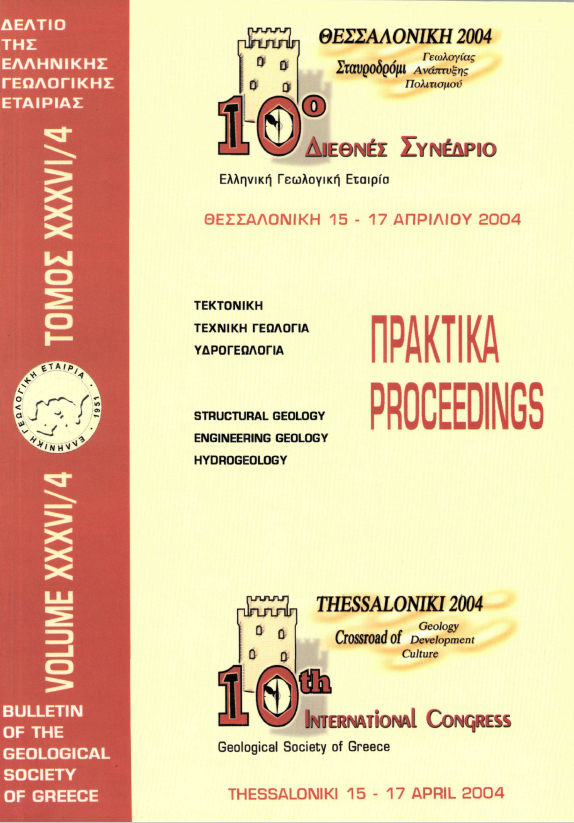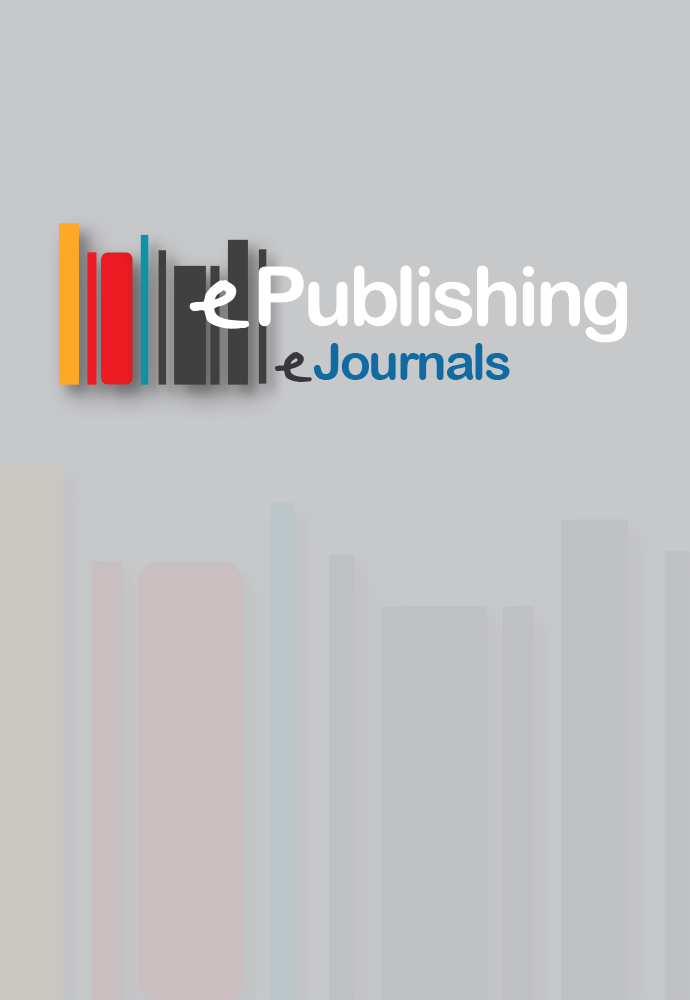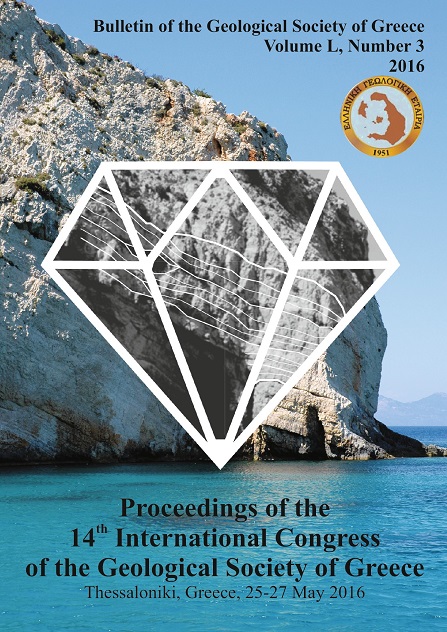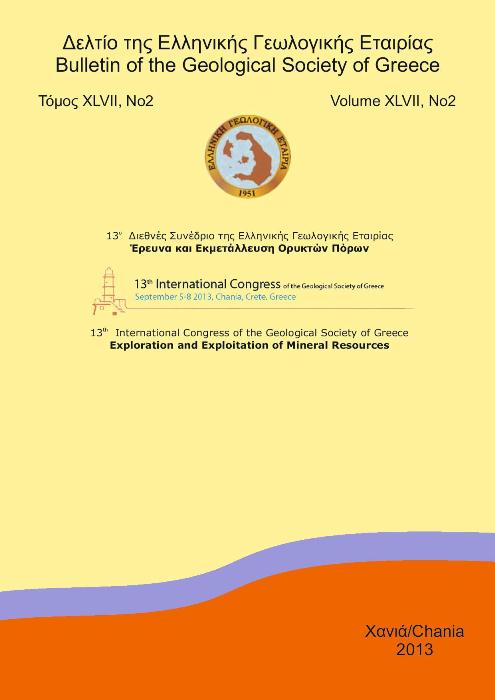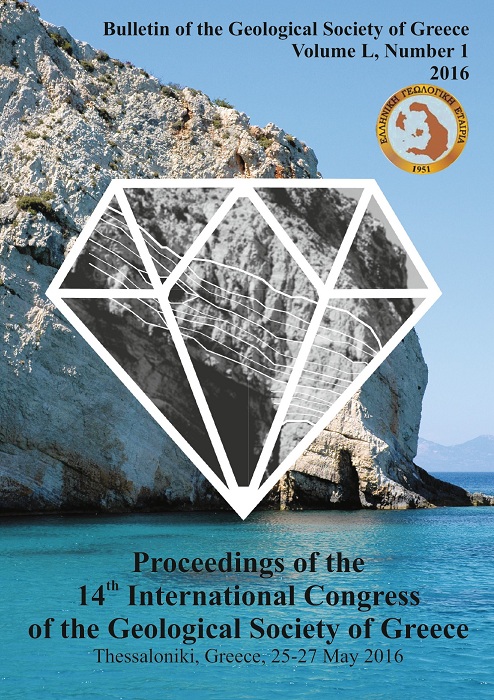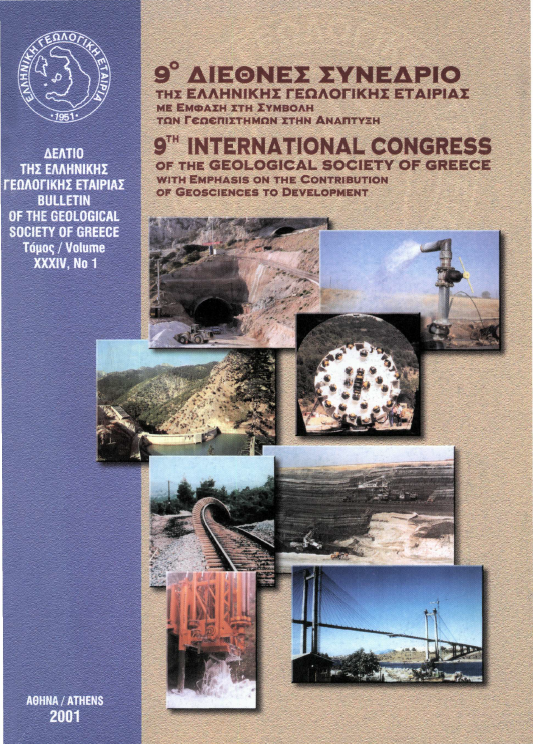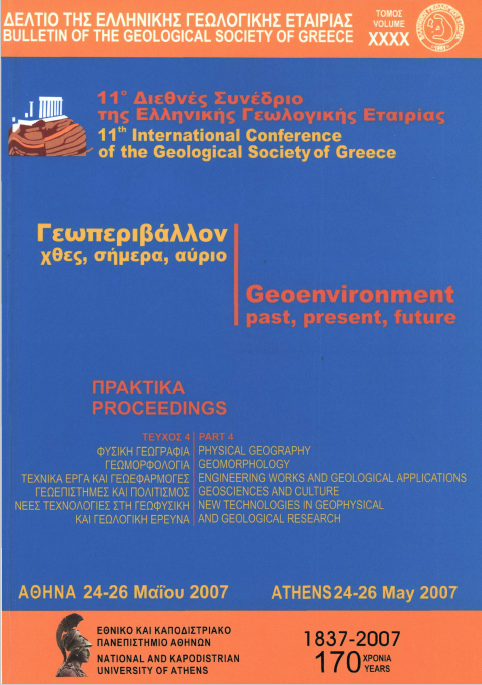MORPHOTECTONIC ANALYSIS IN THE ELIKI FAULT ZONE (GULF OF CORINTH, GREECE)
Abstract
Morphotectonic analysis using geomorphic indices has been developed as a basic reconnaissance tool in order to identify areas experiencing rapid tectonic deformation or estimate relative variations of tectonic activity in a specific area. We applied this analysis in Eliki fault zone, which is located in the western part of the Gulf of Corinth. Eliki fault zone was selected because it displays a spectacular geomorphic expression and hosts historic and recent seismicity. The intensity of active tectonics is interpreted through a detailed geomorphic study of the fault-generated mountain fronts and fluvial systems. Tectonic geomorphology analysis of the Eliki footwall area includes the application of the most commonly used geomorphic indices, such as the mountain front sinuosity index (Smf), the valley floor / width ratio index (Vf), the stream gradient index (SL) and the transverse topographic symmetry factor (T). These indices were estimated on topographic maps and aerial photographs of the study area in order to correlate active tectonics and erosional processes. Our results imply that the Eliki fault zone can be assigned to a tectonic class of the higher tectonic activity. However, spatial variations of tectonic activity along the segmented studied fronts point to a general trend of increasing activity towards the east, which is gradually decreasing towards the west.
Article Details
- How to Cite
-
Verrios, S., Zygouri, V., & Kokkalas, S. (2004). MORPHOTECTONIC ANALYSIS IN THE ELIKI FAULT ZONE (GULF OF CORINTH, GREECE). Bulletin of the Geological Society of Greece, 36(4), 1706–1715. https://doi.org/10.12681/bgsg.16578
- Section
- Tectonics and Geodynamics

This work is licensed under a Creative Commons Attribution-NonCommercial 4.0 International License.
Authors who publish with this journal agree to the following terms:
Authors retain copyright and grant the journal right of first publication with the work simultaneously licensed under a Creative Commons Attribution Non-Commercial License that allows others to share the work with an acknowledgement of the work's authorship and initial publication in this journal.
Authors are able to enter into separate, additional contractual arrangements for the non-exclusive distribution of the journal's published version of the work (e.g. post it to an institutional repository or publish it in a book), with an acknowledgement of its initial publication in this journal. Authors are permitted and encouraged to post their work online (preferably in institutional repositories or on their website) prior to and during the submission process, as it can lead to productive exchanges, as well as earlier and greater citation of published work.

